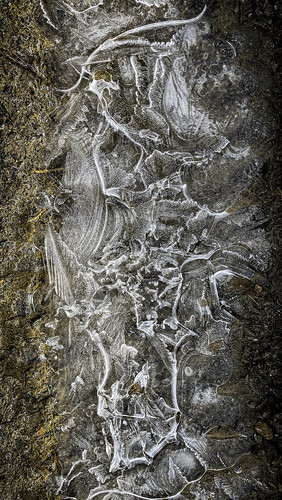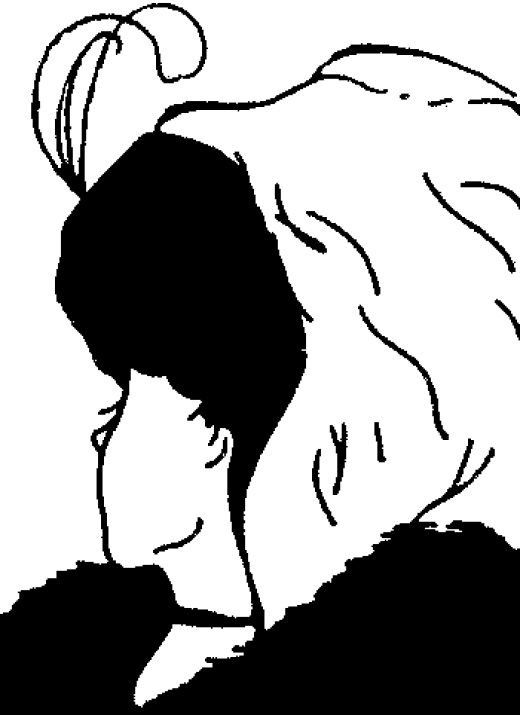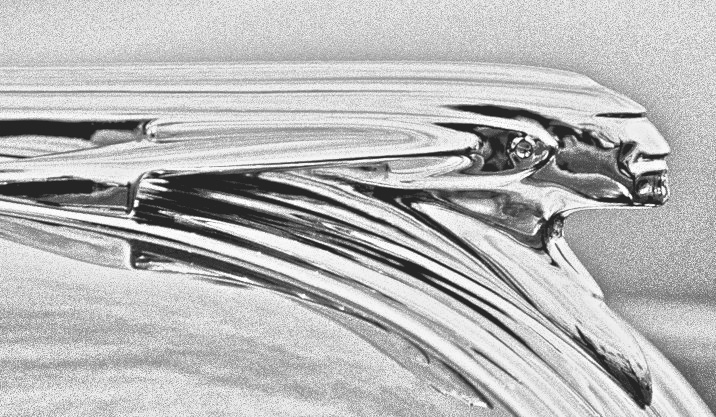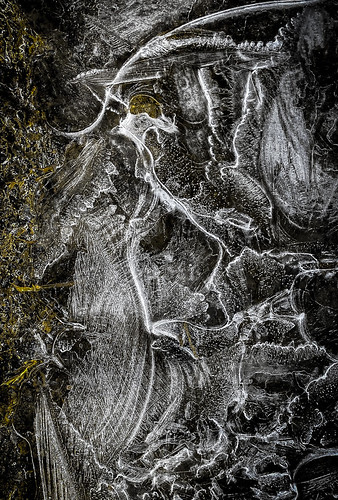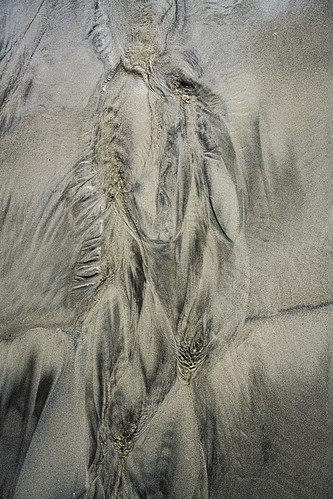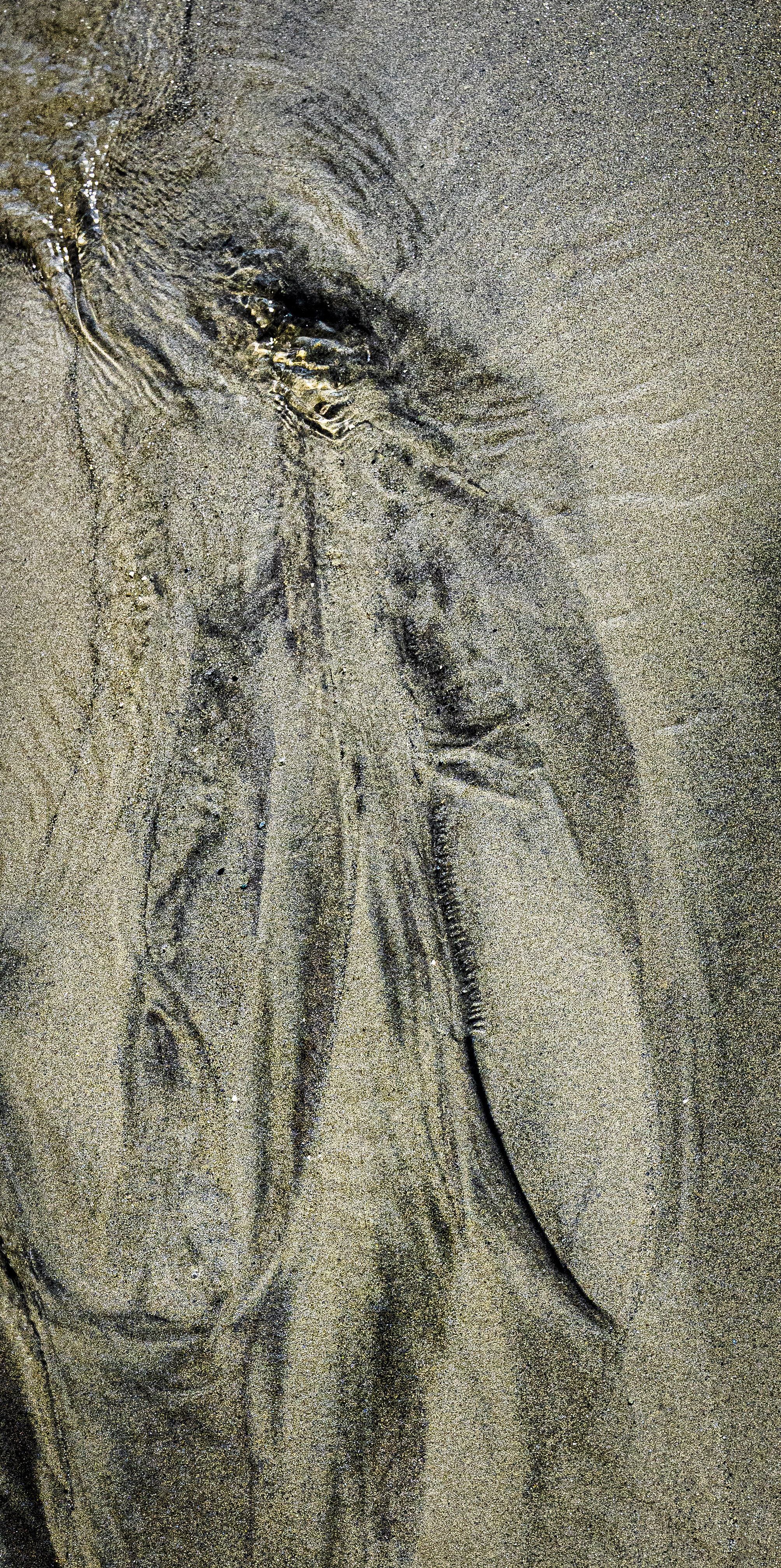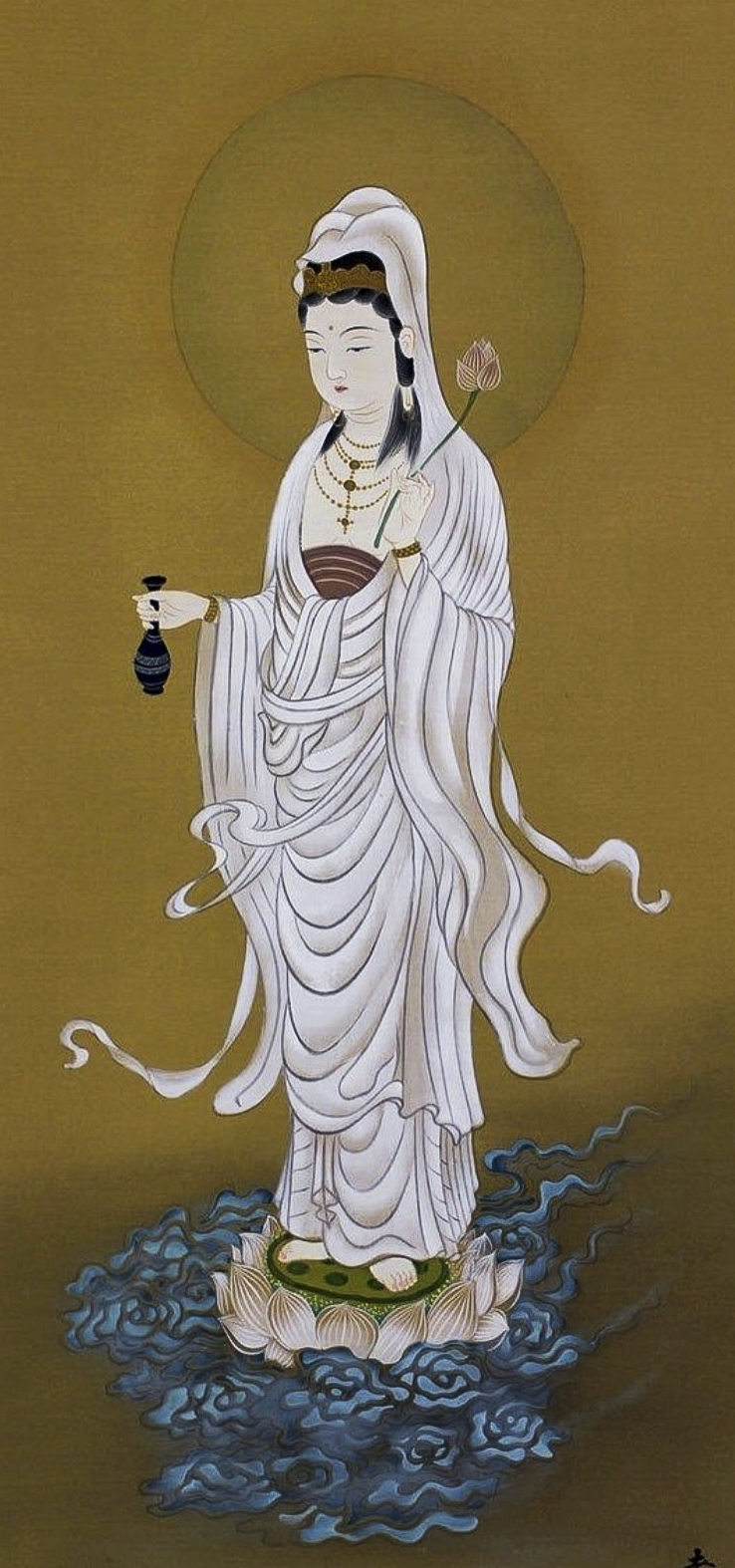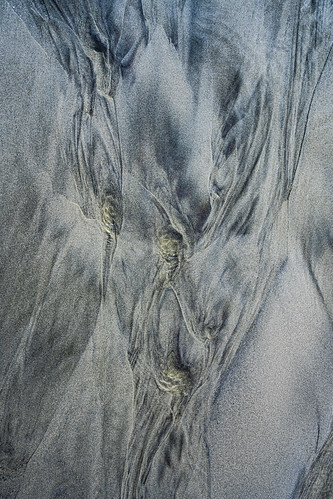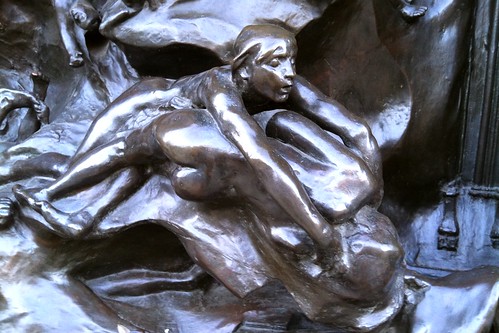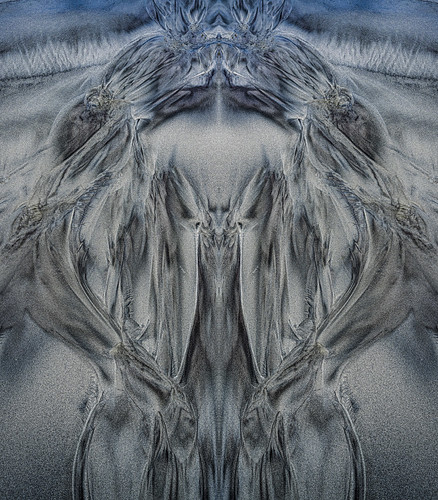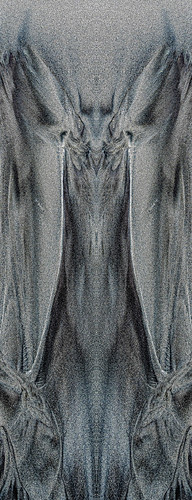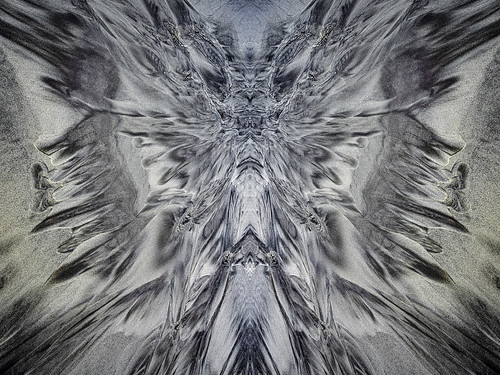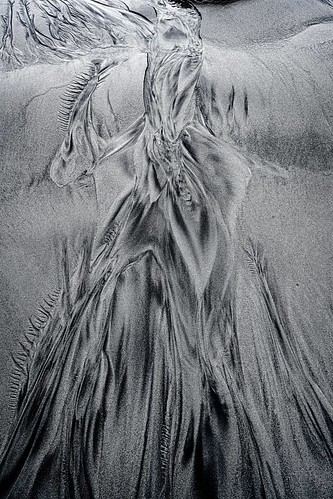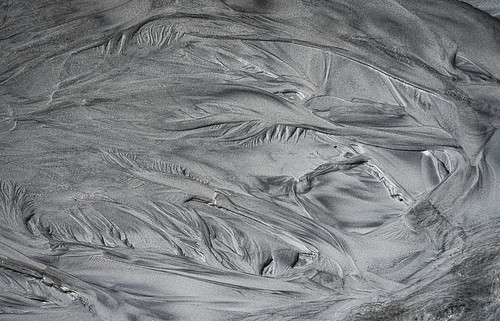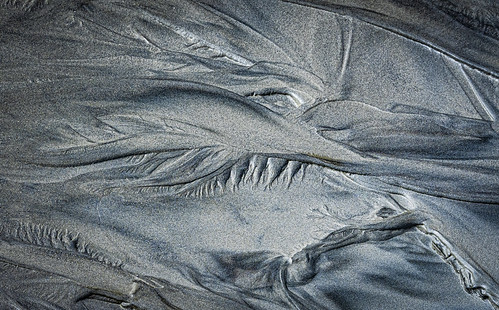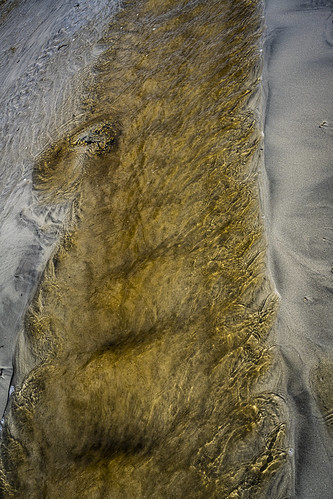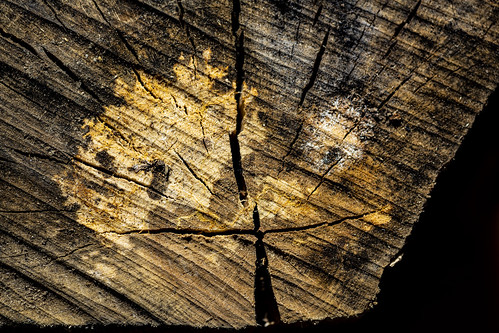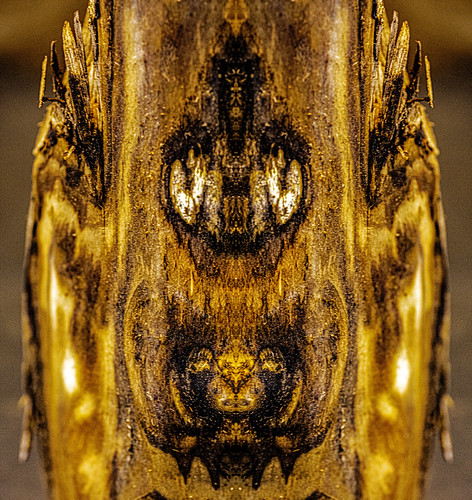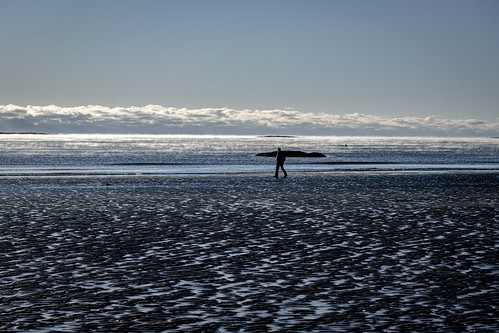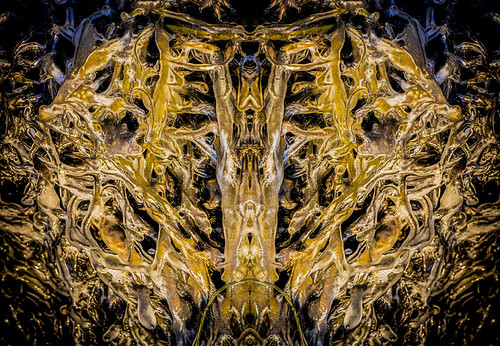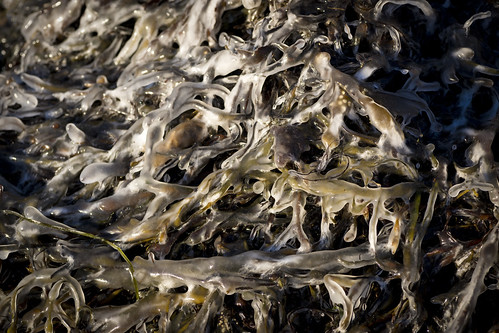I just remembered another verse of Ken Stallcup’s wonderful anthropologist/linguist song, cited in a post last April and now updated with the missing bits included.
*****
But today’s post really has to do with a succession of images emerging from an original capture yesterday at Drift Inn. The raw version as it came from the camera (a broken fragment of sea ice floating above sand):
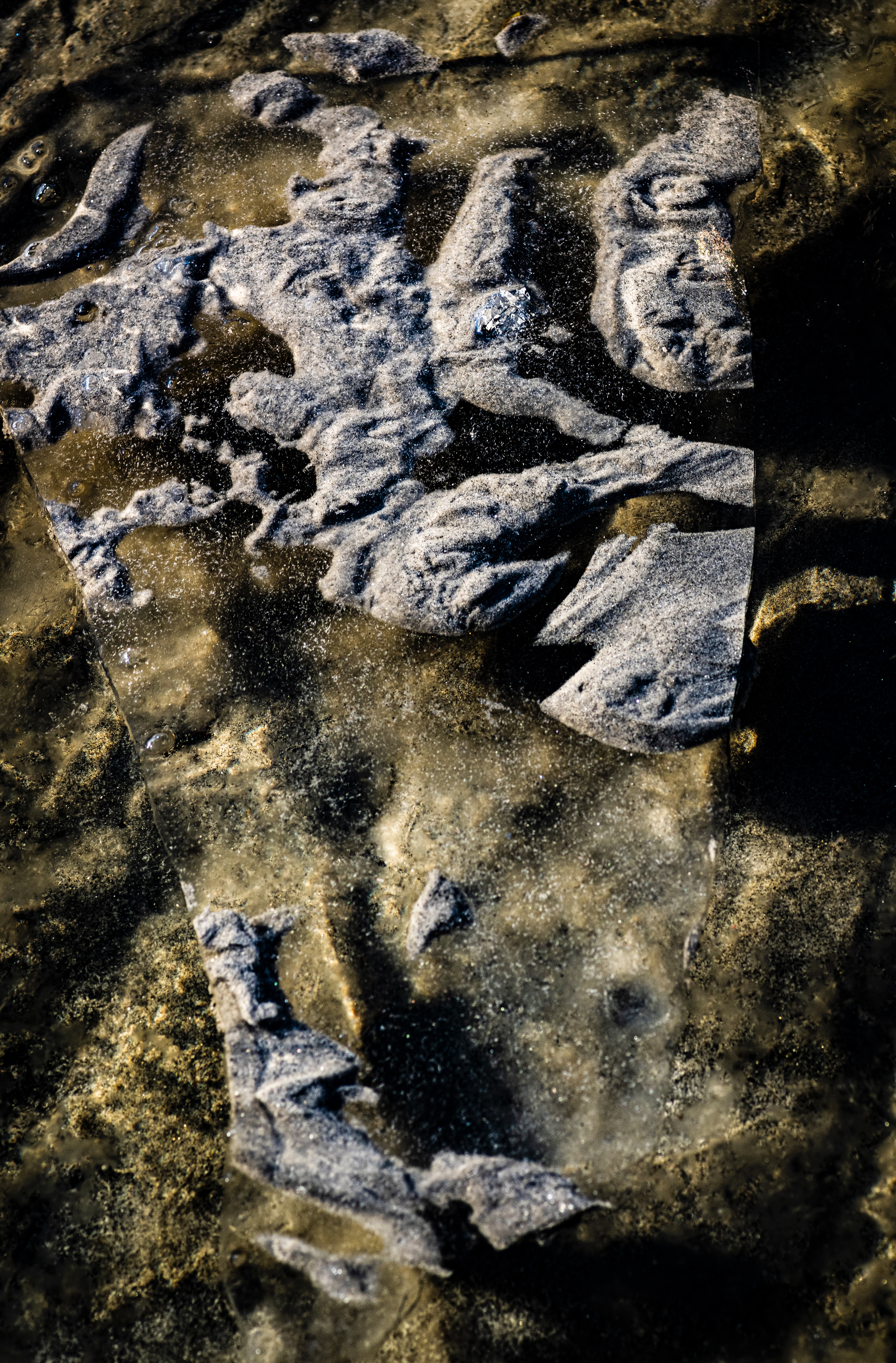
and as adjusted (vibrancy, clarity, sharpness) and uploaded to Flickr:
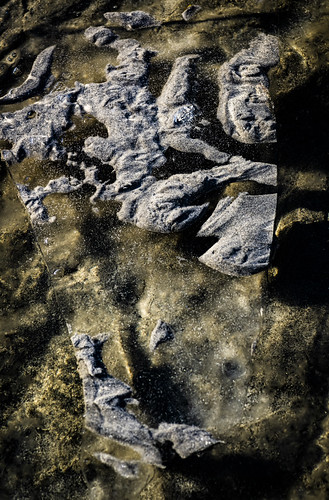
and then I saw a figure within the original, and cropped and rotated:

and eventually with minor adjustments it resolved to this:

And then I wondered about that baleful yellow eye at the top, and did the by-now-familiar copy-flip-join to produce a mirror image:
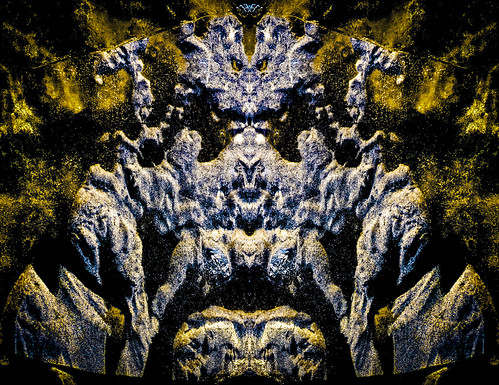
And while we’re considering the experimental, a new perspective arrived yesterday in the form of a 10 mm fisheye lens that has no very serious purpose (or not yet, anyway) but does that thing of making me think differently about what I see via the medium of the camera. Among the experiments I tried was this:
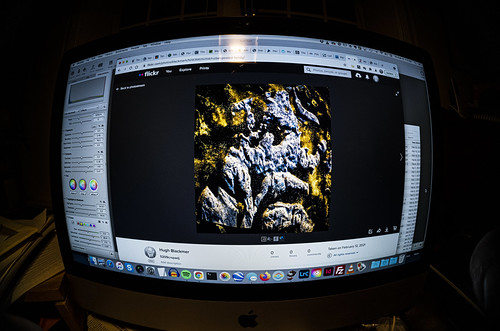
Now, that’s all very meta: a photograph of a photograph, and probably of no consequence… but another example of where the feet wander as one stumbles from thing to thing.
One more image from that lens, which has pretty startling quality for not much $$:

(click on that image to zoom in, and then click again…)
